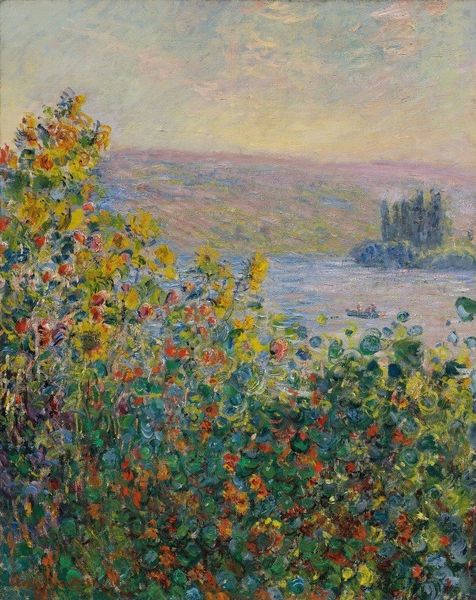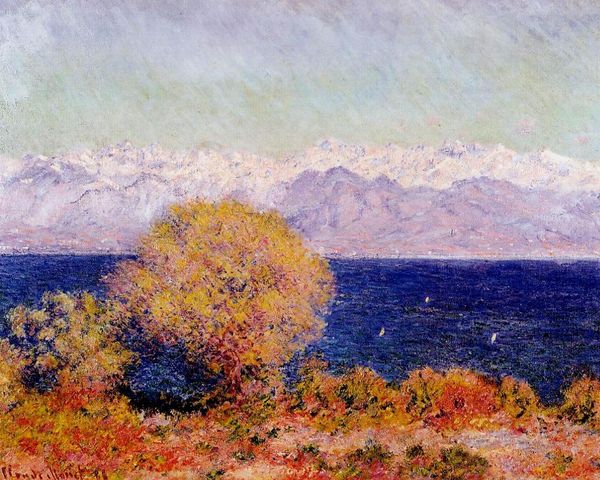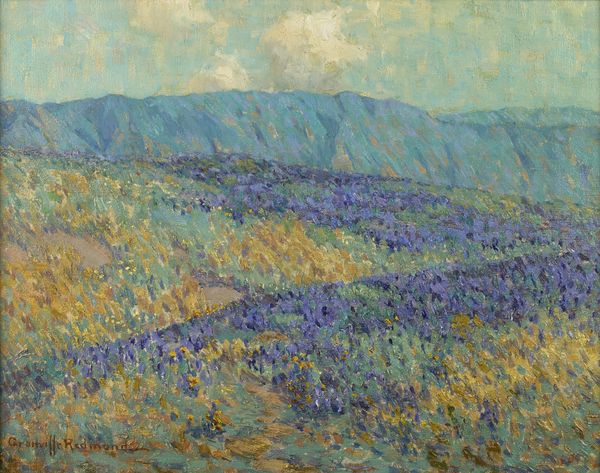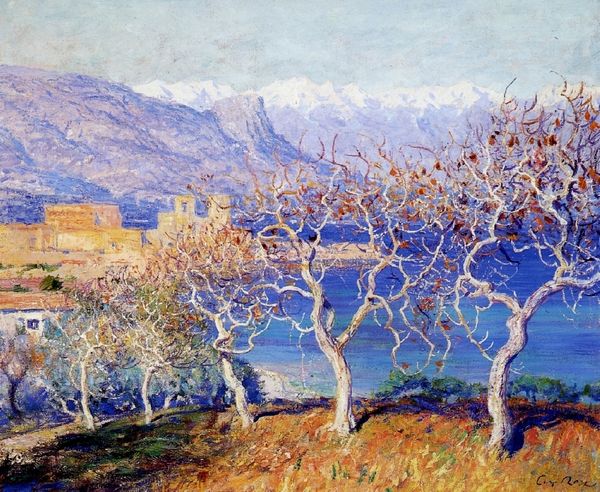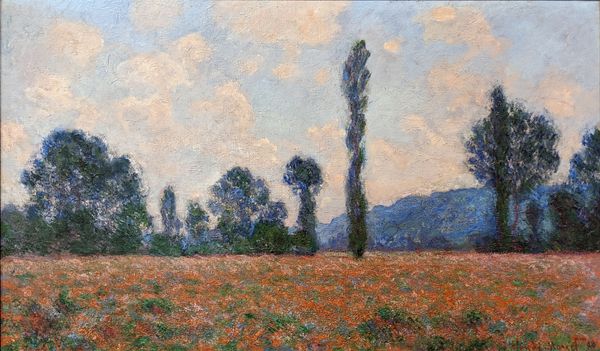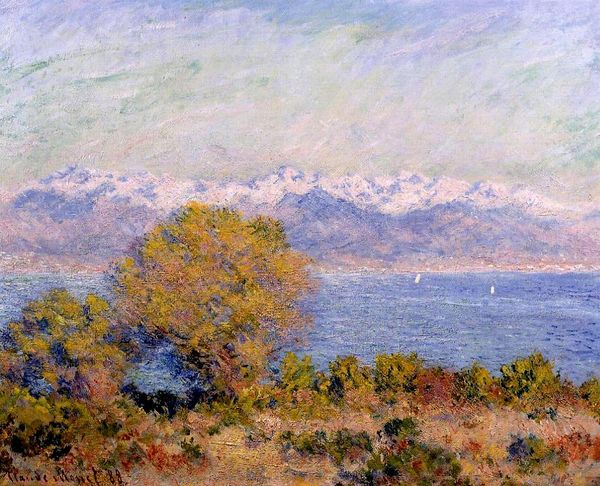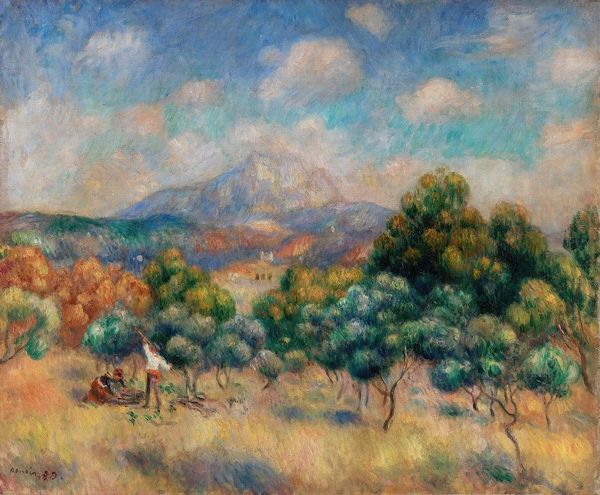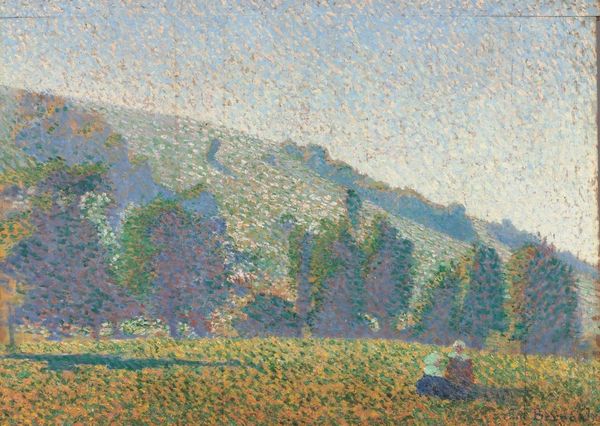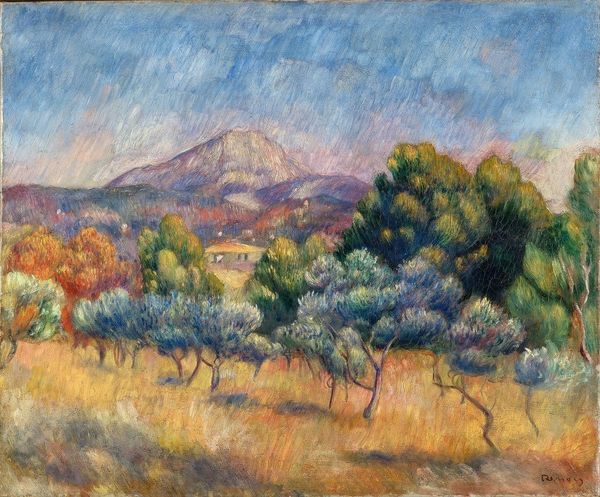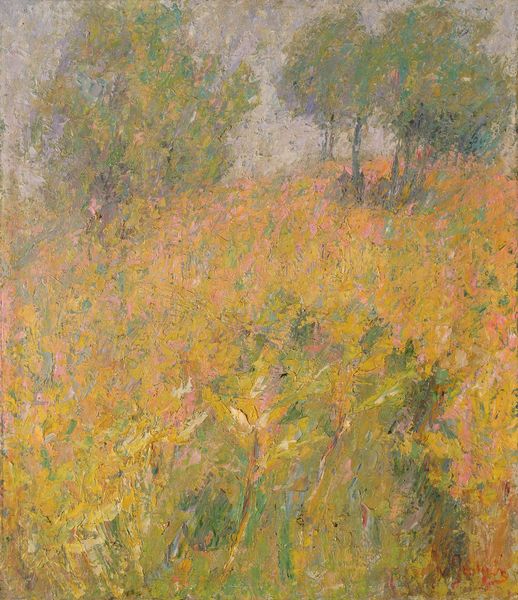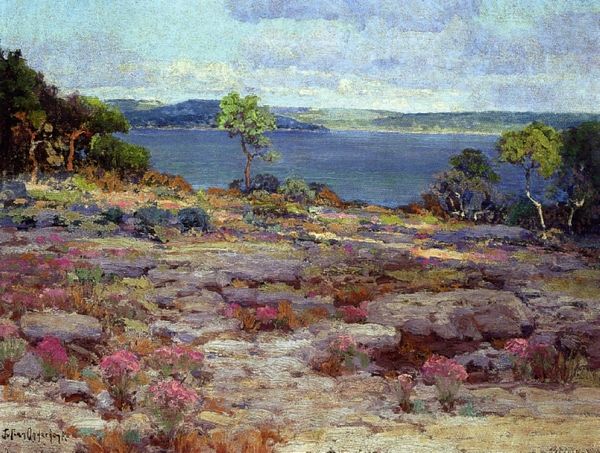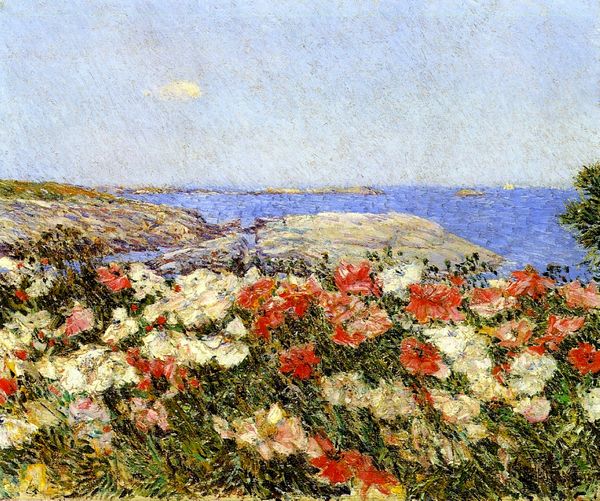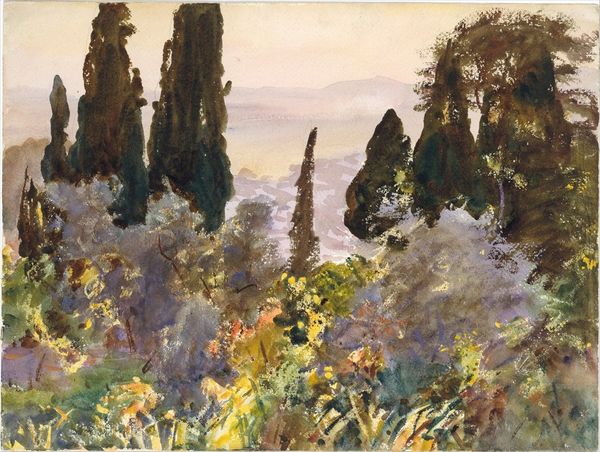
In the morning, Alpes Maritimes from Antibes 1891
0:00
0:00
johnpeterrussell
National Gallery of Australia (NGA), Canberra, Australia
Dimensions: 60.3 x 73.2 cm
Copyright: Public domain
Editor: Here we have John Peter Russell's "In the Morning, Alpes Maritimes from Antibes," painted in 1891 using oil paint. I’m struck by the way he renders the landscape. It feels less about depicting a specific location and more about capturing the light and texture. What's your take? Curator: It's tempting to read this painting as a straightforward landscape, but I find it more compelling to consider the *how* rather than just the *what*. Russell, in his plein-air practice, was directly engaging with the materials and the elements. Look at the visible brushstrokes. Each daub of paint represents a conscious decision, a physical action. How does that relate to the burgeoning industrial revolution during the late 19th century? Editor: You're saying the materiality of the paint itself and his technique are significant in a social and historical context? Curator: Precisely. The tactile quality challenges the perceived division between "high art" and craft. We have this beautiful vista, yes, but it's built upon layers of labor – from the extraction of pigments to the application on the canvas. What do you notice about his brushstrokes versus those of other impressionists like Monet, with whom Russell was closely linked? Editor: I see that his brushstrokes feel more pronounced and less blended, perhaps emphasizing the physical act of painting and less about purely optical effects. Curator: And consider where this painting was made – the south of France. The landscape itself, its materials, colors and quality of light shaped artistic production and contributed to its consumption on a globalized market. Russell wasn't just depicting a scene. He was implicated in a whole system of material exchange. So, how does considering the materials shift your reading of the painting? Editor: I see it now – by focusing on the materials and production, the painting feels less like a passive observation and more like an active engagement with its world. Curator: Exactly. It’s a landscape deeply embedded in its own making.
Comments
No comments
Be the first to comment and join the conversation on the ultimate creative platform.
